Edith Cavell Meadows Hike, Jasper National Park
Floating glaciers, flowering meadows
Mt. Edith Cavell is possibly the most recognizable peak in Jasper, with its pyramidal summit and perfectly diagonal streaks of snow. Named after a heroic British nurse who was executed in World War I, it’s also one of the highest. It stands guard over Jasper, visible from many places such as the top of the Old Fort Point trail, Whistlers Summit, and Cavell Lake a short distance into the Tonquin Valley trail. The Path of the Glacier and Cavell Meadows trails explore the area immediately surrounding the mountain, providing an up-close-and-personal look at this impressive peak.
This day was one of my most highly anticipated during our trip. Edith Cavell is one of Jasper’s (many) top-billed sights, and besides, we had heard that there would be a lake with floating glaciers in it—in late August!
First off, getting to the trailhead is an adventure on its own. Cavell Road is steep, narrow, and switchback-laden, with many blind corners and sketchy turns. We had done it in a taxi on the way to the Tonquin Valley’s Astoria trailhead, about a kilometer before the Edith Cavell parking lot, but this time, driving ourselves, we could take it slower and hopefully safer.
Arriving at the parking lot, the massive face of Mt. Edith Cavell greeted us. It was early, but already the parking lot was filling up, with keen hikers hoisting packs and flourishing trekking poles.
Eager to beat the crowds, we hurried along the flat, paved Path of the Glacier trail straight to Cavell Pond, at the base of Edith Cavell. Sure enough, we saw a milky blue lake with fragmented chunks of ice literring its surface.
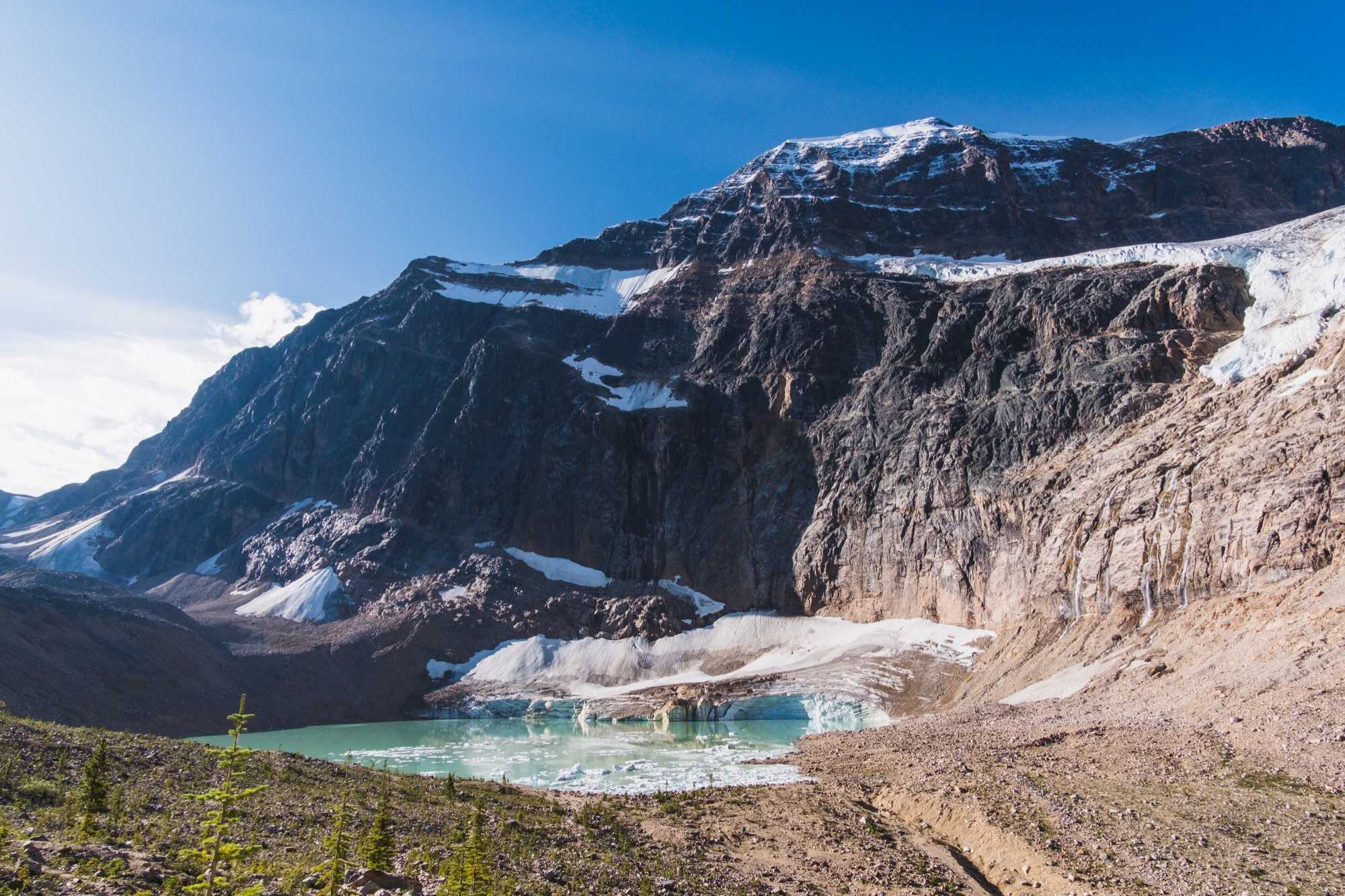
From the viewing platform, it was hard to tell just how big these glacier pieces were, but in the photo below, you can just barely see a hiker in the bottom center (who unfortunately ignored the sign to not walk down to the lakeshore, due to trail restoration); the ice forms veritable islands!
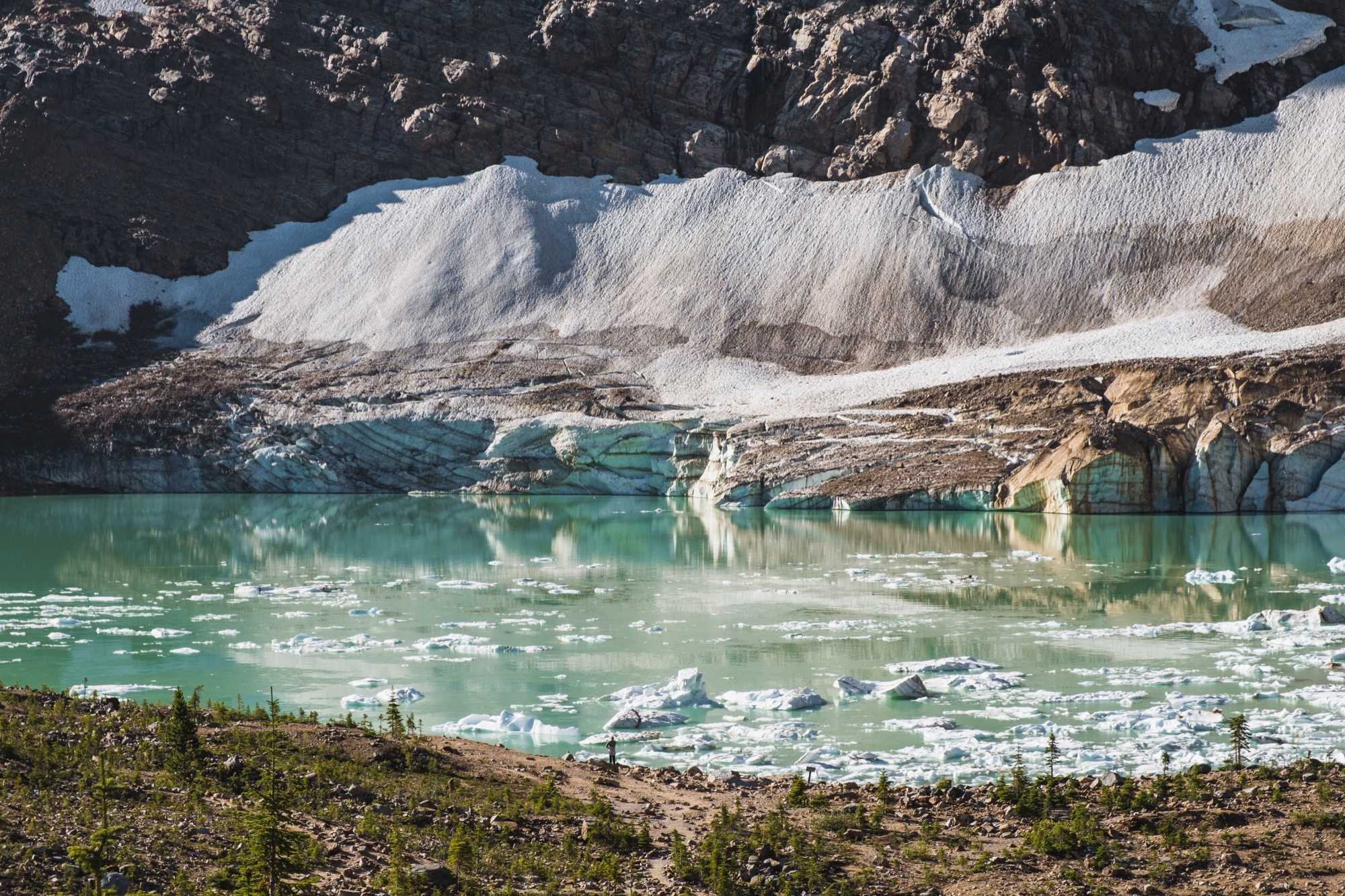
There are two trails in the area, the short Path of the Glacier to the lake viewpoint, and the longer Cavell Meadows, which, unsurprisingly, traverses wildflower meadows. After sufficiently enjoying the lake, we set off on the latter trail—and the switchbacks started. Looping behind a rockpile, on which scurried multiple marmots, we saw the lake from a higher perspective. We watched as narrow waterfalls cut scars down the cliffs.
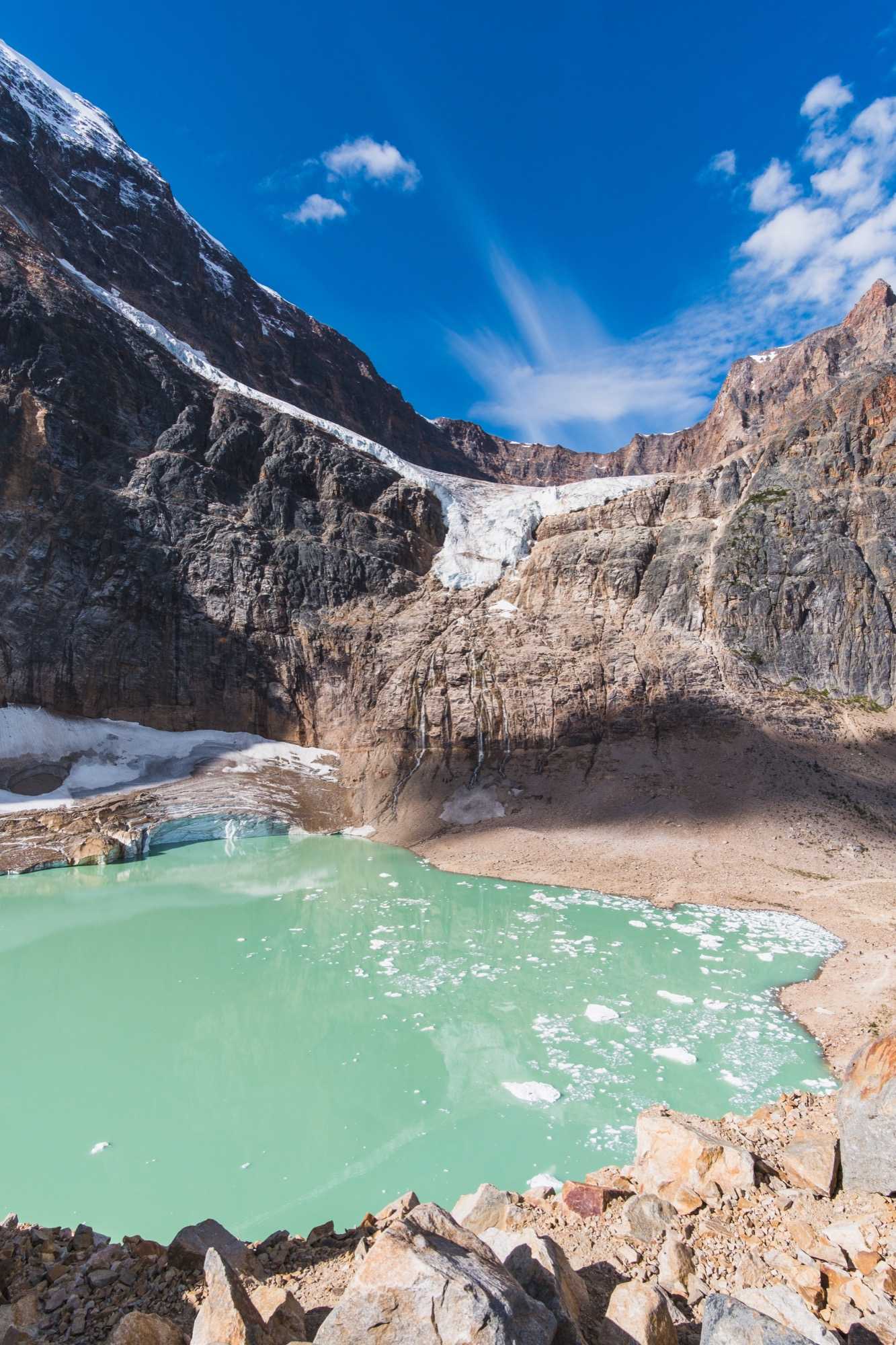
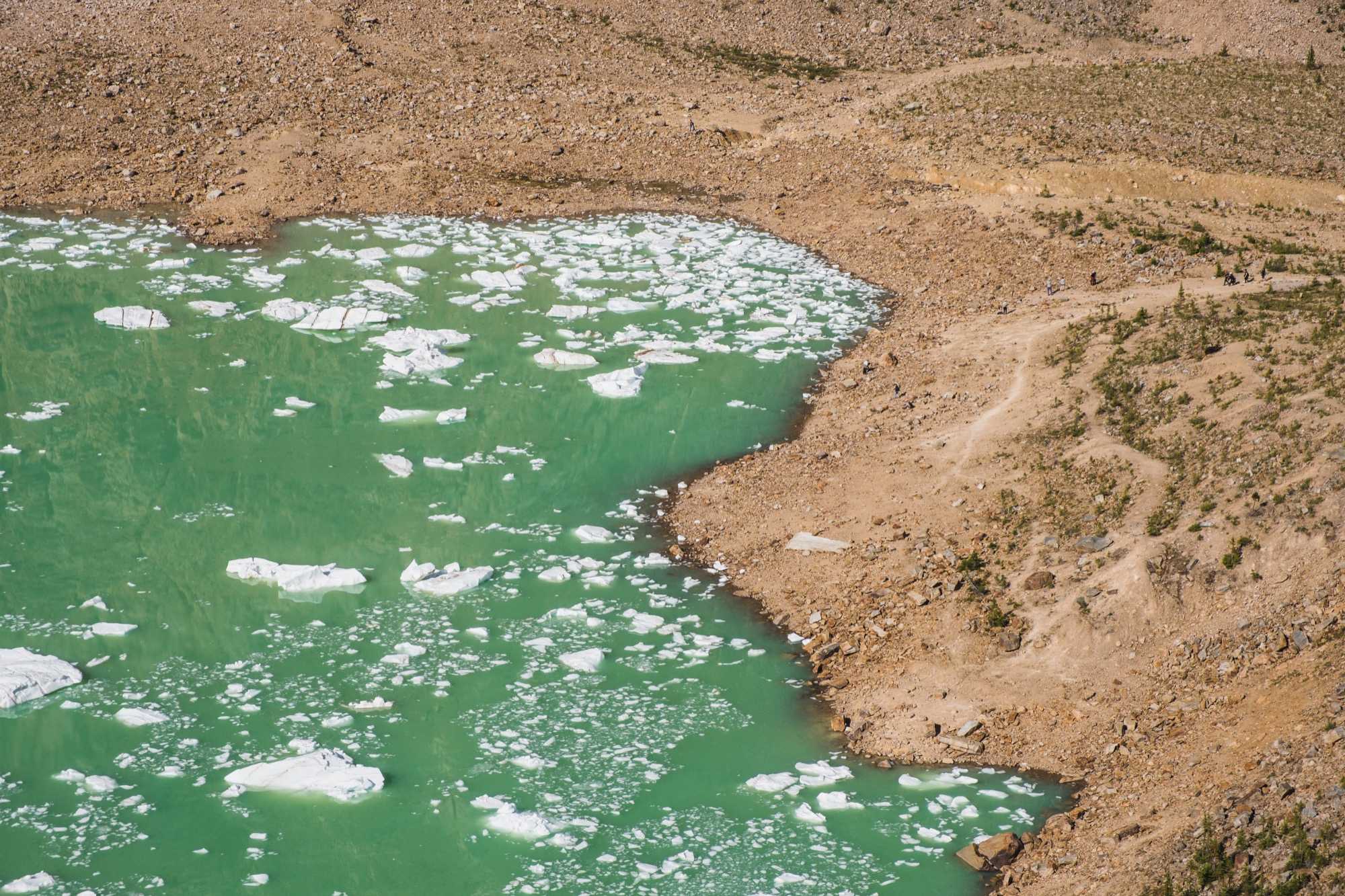
Entering a forest, we saw more marmots scurry by (and realized just how big they are!). Occasionally we would hear loud rumbles as pieces fell from the glaciers; at a small clearing, we managed to see the aftermath as small chunks of ice trickled down like fine powder.
We soon arrived at the meadows that give this trail its name. The wildflowers weren’t as dense as they would have been during peak season a few weeks earlier, but they were still beautiful. With Mt. Cavell in the background, I got some classic macro shots.
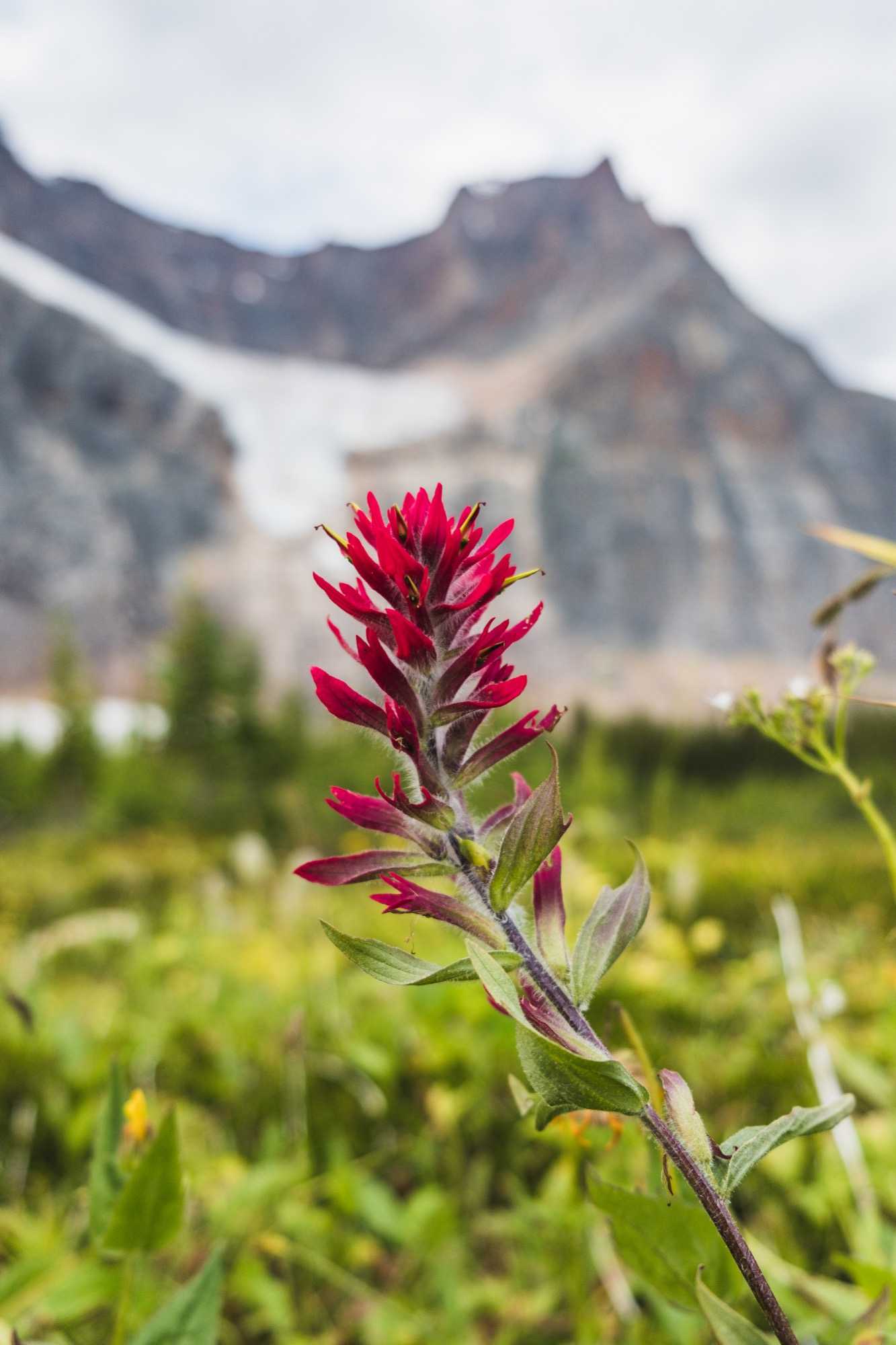
The trail splits into several paths upon arriving at the meadow. It’s well worth exploring the entire loop, because there are viewpoints scattered around it. Also, you never know where you might see the nicest flowers.
Looking back towards the lake, we began to see the valley from which we had come. It was somewhat reminiscent of the valley we had walked through on the Plain of Six Glaciers trail. I guess there are only so many combinations of gray-brown mountains, green forests, and turquoise lakes.
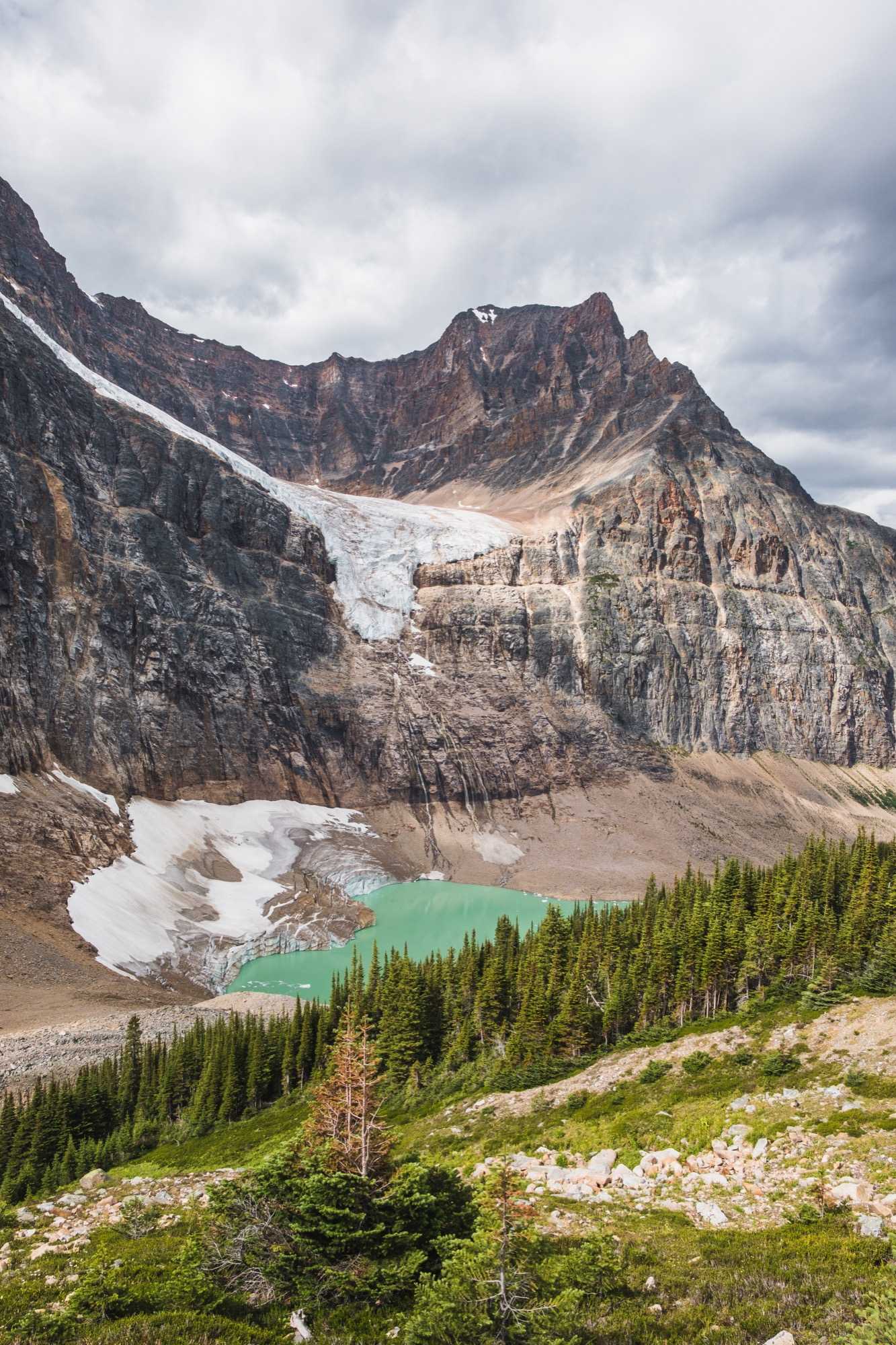
What was unique however was the surrounding alpine meadow, which we hadn’t seen at Lake Louise. We climbed and climbed, watching trees, shrubs, and grass give way to bare rock.
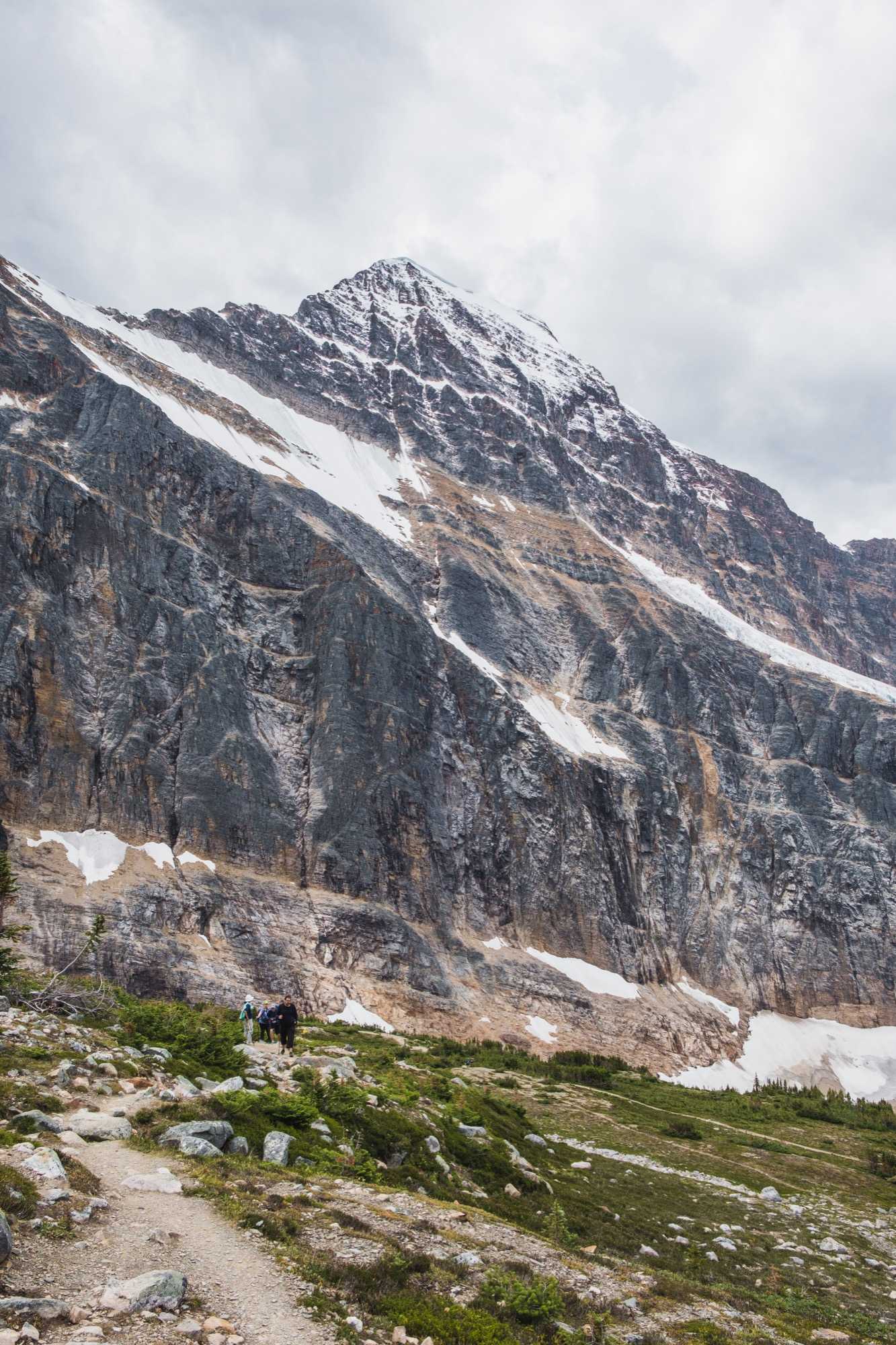
We could soon see microscopic hikers on a distant ridge. There’s always a moment of disbelief when you realize how far you have to go—but the distance always turns out closer than it initially appears.

In this case, all it took was a walk up a small ridge (against a wonderful backdrop), and a couple of switchbacks up some scree.
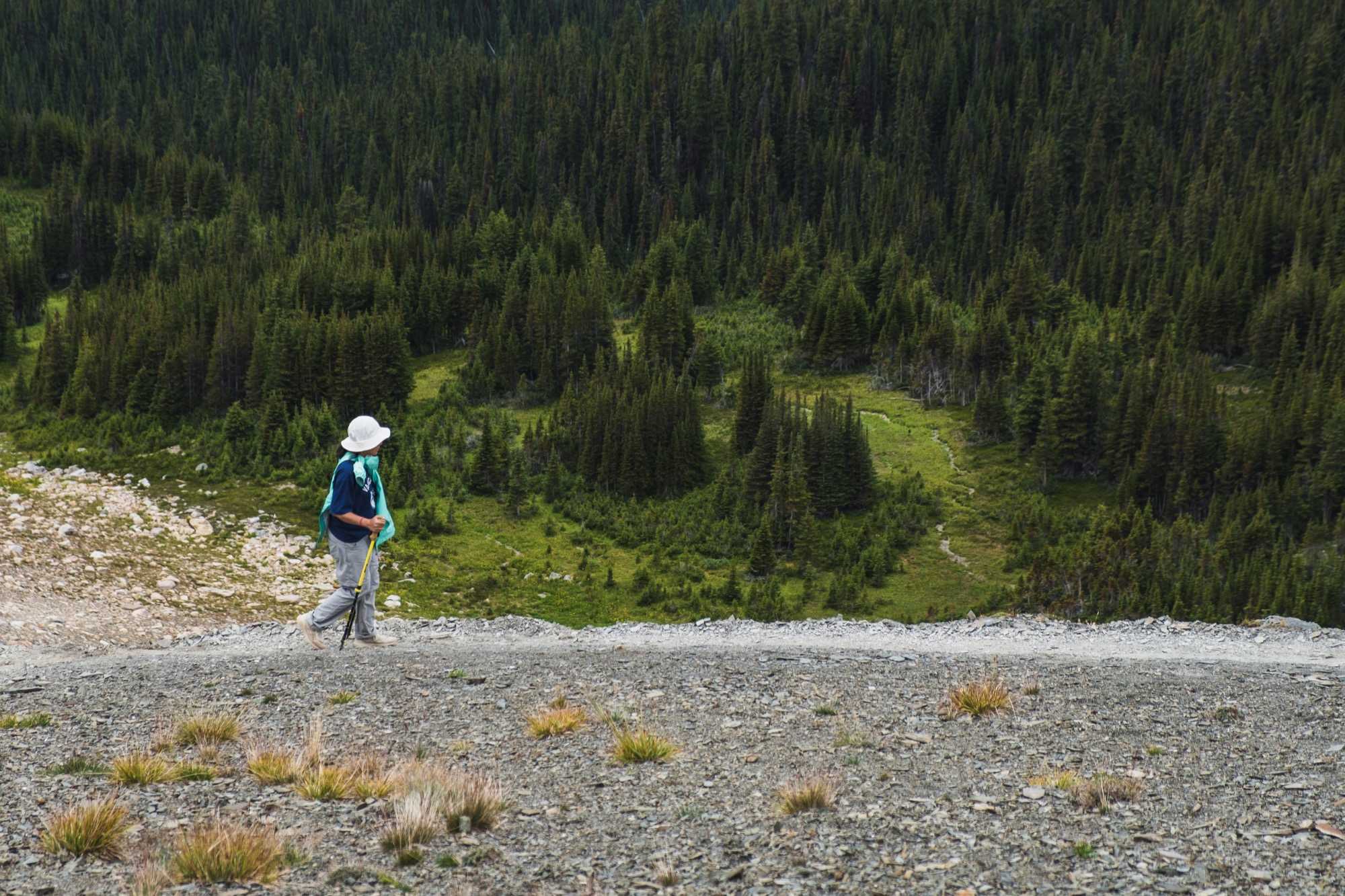
Arriving at the main endpoint of the trail, we sat down and enjoyed snacks alongside some ever-present ground squirrels. The lake was tiny now—although the glaciers seemed to defy physics and remain the same size.
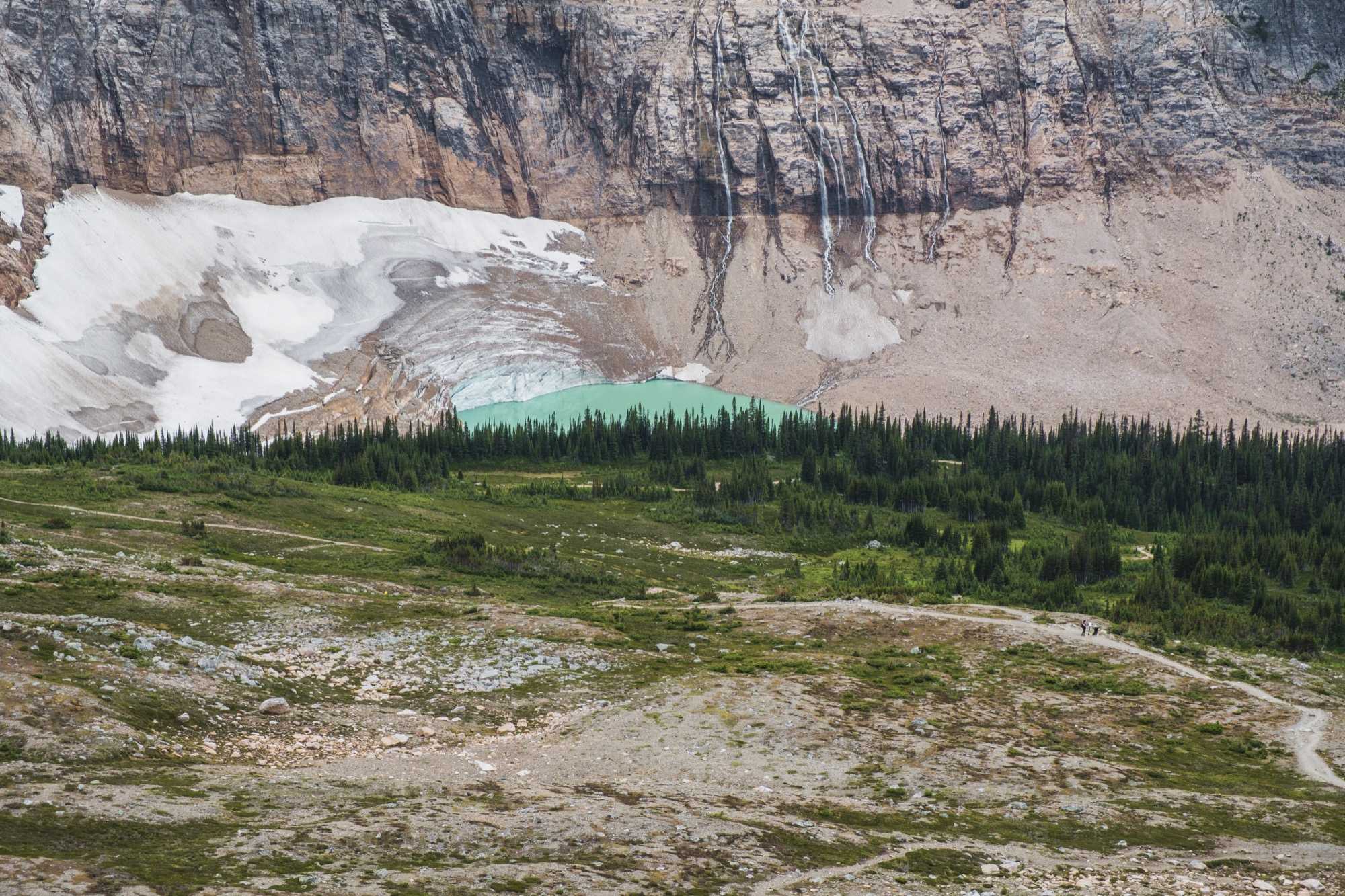
And as always, Mt. Cavell and her sister peaks loomed over us.


From here, there was a trail to scramble up a nearby summit. We weren’t quite up for it, so we headed back down toward the valley. We took a different path than the one we had taken on the way up, and were treated to some late season wildflowers.


The clouds grew thicker as the day progressed. I think the Rockies are at their most beautiful under overcast skies: clouds lend a certain drama to the atmosphere that’s testamant to the power and volatility nature possesses. When we arrived back at the lake, we saw the same view in a very different light.
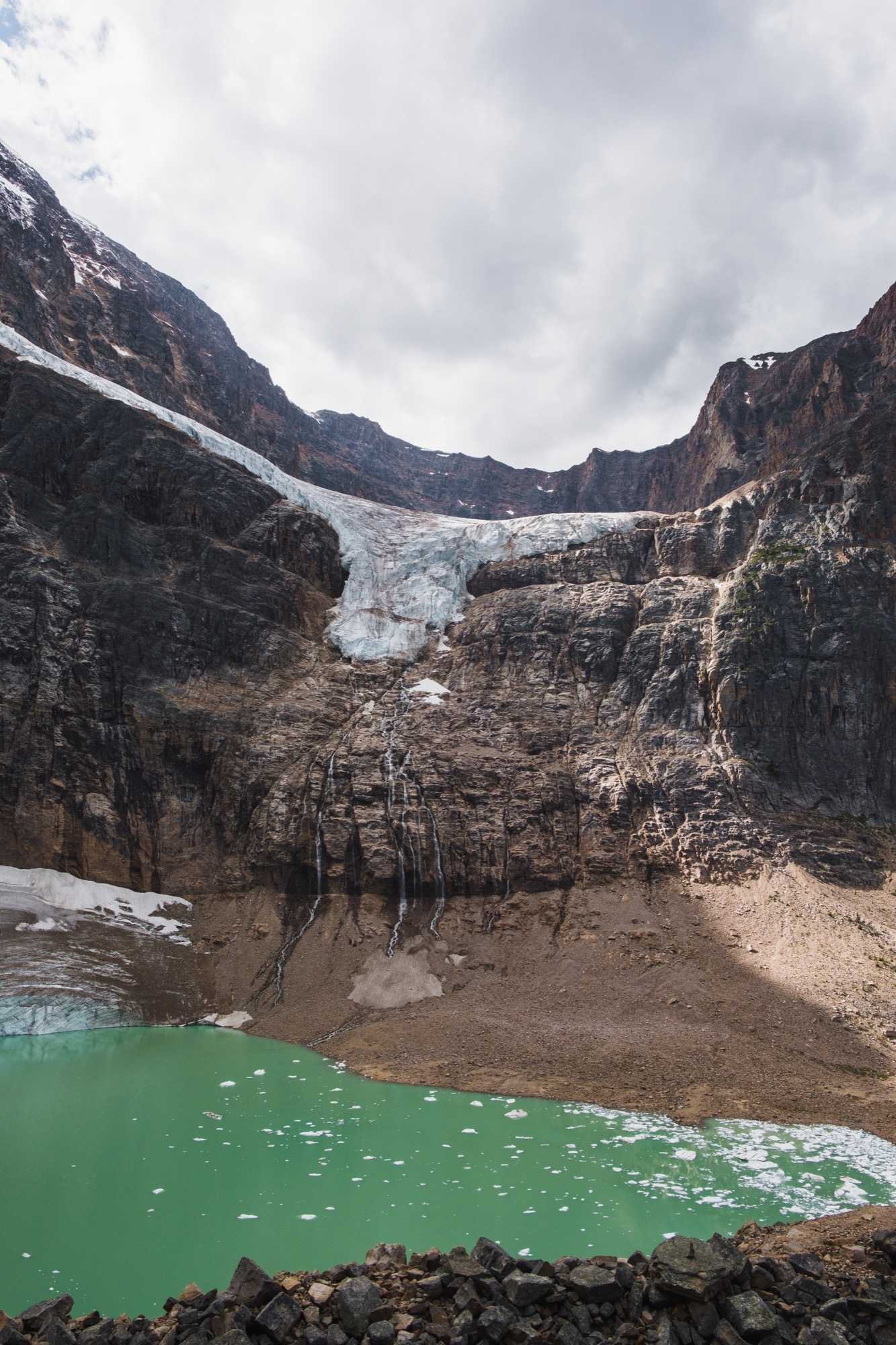
Of course, we passed by a couple more marmots relaxing on the rockpile again. What was more interesting however was the pika—basically a rabbit with round ears. They share alpine habitats with marmots, and are apparently quite common, but this was our first encounter with one.

I’ll conclude with a late afternoon picture of Mt. Cavell, Jasper’s watchful guardian. Overall, I think this was one of the better hikes we had done in the Rockies—not easy, but also not too difficult, with a remarkable variety of views. And of course, you can’t beat the floating glaciers.

Practical tips
- Our taxi driver (on the Tonquin trip) mentioned that he had seen lots of grizzlies on Cavell Road. Although we didn’t see any, it can’t hurt to keep an eye out!
-
Resources:
